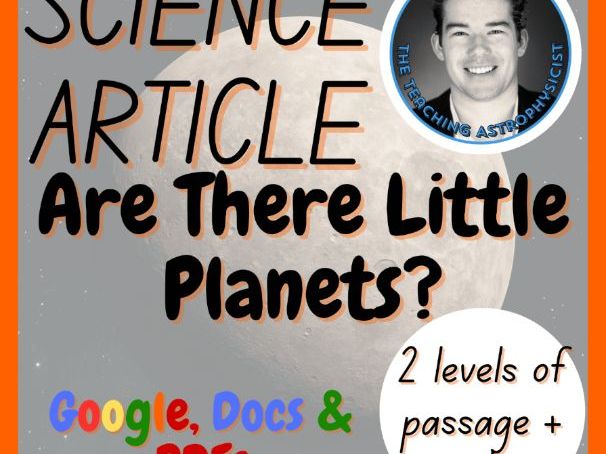

Studying whether there are ‘little planets’, also called dwarf planets, helps middle and high school students understand how scientists define planets, how gravity shapes worlds, and how the solar system formed. A two level set of reading passages with questions lets every learner access the big ideas at the right depth. The higher level passage prepares students to examine the IAU criteria, roundness versus clearing the orbit, and case studies like Pluto, Ceres, and Eris, with short data tables on size, density, and albedo. The more accessible passage explains what a dwarf planet is, where the Kuiper Belt is, and why some objects are not full planets, using clear language and intriguing image(s). Both versions include vocabulary support and scaffolded questions that move from recall to compare and contrast to evidence use, aligning with NGSS MS-ESS1 and HS-ESS1. This flexible resource connects space exploration to core physics and Earth science ideas, strengthens science literacy, and sparks curiosity about how new discoveries can reshape what we think we know about our solar system.
This tiered approach - offering two sets of guiding reading and questions tailored to each text - builds foundational skills in reading, critical thinking, and scientific inquiry, so you can use the right one for you. Through such structured resources, students develop a deeper appreciation for the processes that create and preserve this incredible natural phenomenon, and gain the scientific literacy necessary to make informed decisions about space exploration and gas movements.
This 2 article set of are there little planets? reading passages with questions provides the perfect grab and go, print and provide resource that can help your students learn all about are there little planets? For digital, you can provide a Google doc copy for ease of submission or a Microsoft word version as well. In this are there little planets? article with questions to check comprehension and inspire scientific thinking.
THIS ARE THERE LITTLE PLANETS? ARTICLE CAN BE USED SO MANY WAYS:
- Useful for substitute (sub) teaching
- To extend students
- To increase scientific literacy in your class
- A weekly reading task
- Great as a lesson filler when class goes too fast
- To inspire students on a particular topic
- Give a selection of these articles for students to choose from
WHAT’S INCLUDED IN THIS ARE THERE LITTLE PLANETS? READING PASSAGE WITH QUESTIONS:
- 2 - 3 page Word doc image - textboxes teacher version with answers
- 2 - 2 page Word doc image - textboxes student version with room to fill in answers (text boxes)
- 2 - 3 page PDF teacher version with answers
- 2 - 2 page PDF student version without answers (but space left to do so)
- 2 - 3 page Google doc image - textboxes teacher version with answers
- 2 - 2 page Google doc image - textboxes student version with room to fill answers (text boxes)
Something went wrong, please try again later.
This resource hasn't been reviewed yet
To ensure quality for our reviews, only customers who have purchased this resource can review it
to let us know if it violates our terms and conditions.
Our customer service team will review your report and will be in touch.